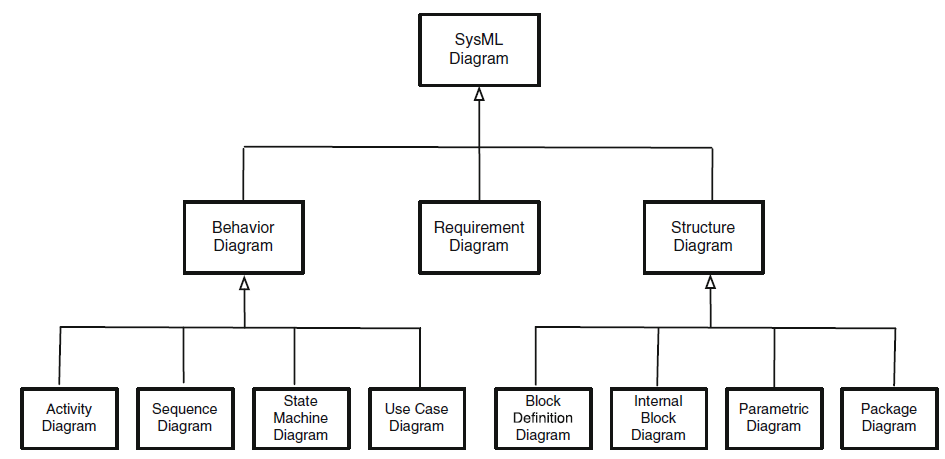Systems Modeling Language Fundamentals

SysML is a graphical modeling language used to describe systems. Due to the flexible nature of SysML, it may be used to model large systems which contain a mix of mechanical systems, electrical systems, software, data flows, people, natural objects, and facilities. SysML attempts to resolve the varying requirements of complex systems to ensure maximum usability. The stated purpose of SysML is to control large systems with multiple configurations with changing requirements and infrastructure.
Model-based systems engineering involves methodically defining customer needs and the requirements associated with those needs. This holistic process involves all aspects of a product, from conceptualization to decommissioning. The International Council on Systems Engineering, INCOSE, was formed to assist in allowing this emerging field to become a mainstream design tool [1].
Model-based systems engineering uses interconnected models to represent a completed system [1]. The interrelations between these models interest designers as interface points tend to drive design decisions. Ulrich writes that all interacting components must be connected using some form of physical interface [2]. It is, therefore, incumbent upon the designer to have a logical, organized system of defining product subassembly interfaces within a model.
Following the formation of INCOSE, many engineering design methodologies have been standardized in systems engineering. As system complexity continues to grow because of emerging technologies, it has become necessary to improve modeling techniques to accommodate large systems engineering projects. After much development, a modeling system based on Universal Modeling Language was created. This modeling system was named “Systems Modeling Language. [1]”
As systems engineering professionals have learned to accommodate the ever-increasing software and firmware requirements placed on products, SysML has stepped in to provide a holistic method of tracking requirements. To properly apply systems engineering methods to SysML model development, it is necessary to establish a workflow for modeling [3].

Problem elaboration is the first step of defining a model. This allows the systems engineer to evaluate alternatives before deciding on a forward path. Alternatives may then be investigated to ensure the determined solution meets all customer requirements. This can be met using axiomatic design principles to ensure design parameters meet customer needs. These results can be verified using parametric diagramming within SysML [3].
After the major design decisions have been made, the available design options may be modeled. This may serve as a permanent record of the system throughout its lifetime. Afterward, the system is integrated with environmental constraints and any implementation requirements. As the system is produced, it must be tested against the constraints specified in the SysML model. These constraints ensure accurate functionality within the given operating parameters. Failure to attain these parameters indicates that the customer's requirements may not be satisfied [3].
An example SysML flow diagram is shown above.
References:
[1] Farid, A. M., and Suh, N. P., 2016, Axiomatic Design in Large Systems.
[2] Ulrich, K., 1995, “The role of product architecture in the manufacturing firm,” Res. Policy, 24(3), pp. 419–440.
[3] Weilkiens, T., 2006, Systems Engineering with SysML/UML: Modeling, Analysis, Design, Elsevier Ltd, Heidelberg.



Member discussion